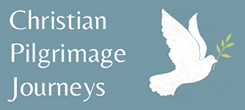
Holy Monastery Of Iviron
The monastery was built under the supervision of two Georgian monks, Ioannis Ivir (John the Iberian) and Tornike Eristavi between 980-983 and housed Georgian clergy and priests. The name Iviron originated from the ancient Georgian Kingdom of Iberia (Iveria) where the master architect of the monastery Ioannis was from. The monastery was supported by different Byzantine emperors and at one point (middle of 14th century) was the second biggest and important monastery on peninsula after the monastery Megisti Lavra.

Apart from Georgians many Greek monks arrived in the monastery. That led to the division inside the monastery resulting in two different Holy Liturgies in two different churches with two different religious rituals. This situation continued until the 14th century, when the Greek population of the monastery became dominant and from then the religious life of Iviron had continued in Greek Orthodox tradition.
In 16th century monastery of Iviron becomes an important spiritual center. Today the monastery ranks third in the hierarchy of the Athonite monasteries. The monastery library contains 2,000 manuscripts, 15 liturgical scrolls, and 20,000 books in Georgian, Greek, Hebrew, and Latin. The relics of more canonized saints than any other on Mount Athos are kept in Iviron.

The Panagia Portaitissa, the famous miraculous 9th century icon of Virgin Mary, is also located at Iviron. The tradition of Mount Athos connects the icon with the period of Byzantine iconoclasm under the Emperor Theophilus (829–842). In Nicaea, the solders of the emperor wanted to take the icon from one widow. The woman praying thrown the icon in the water, where it not sunk but stayed afloat and disappeared in horizon.
The only son of the widow became a monk, came to Mount Athos and spent his life in the monastery of Iviron. He told the story of the icon to his fellow monks. Once, years later after he had died, the icon appeared on the shore of the harbor of the monastery and was accepted by the humblest monk of Iviron. The icon did not let the monks to put it in the Katholikon of the monastery, as every time it would disappear from there and would be found next to the gates of the monastery. Monks took it as a sign and a small chapel was built next to the gates and the icon of Panagia Portaitissa ("Gate-Keeper") from that time until today can be found there.
An Arab pirate, who raided the monastery hit the icon with his knife and blood started flowing for the icon. The pirate became a Christian and a saint, he was named Aghios Varvaros (Saint Barbarian) and his painting can be found on the wall of the chapel.



